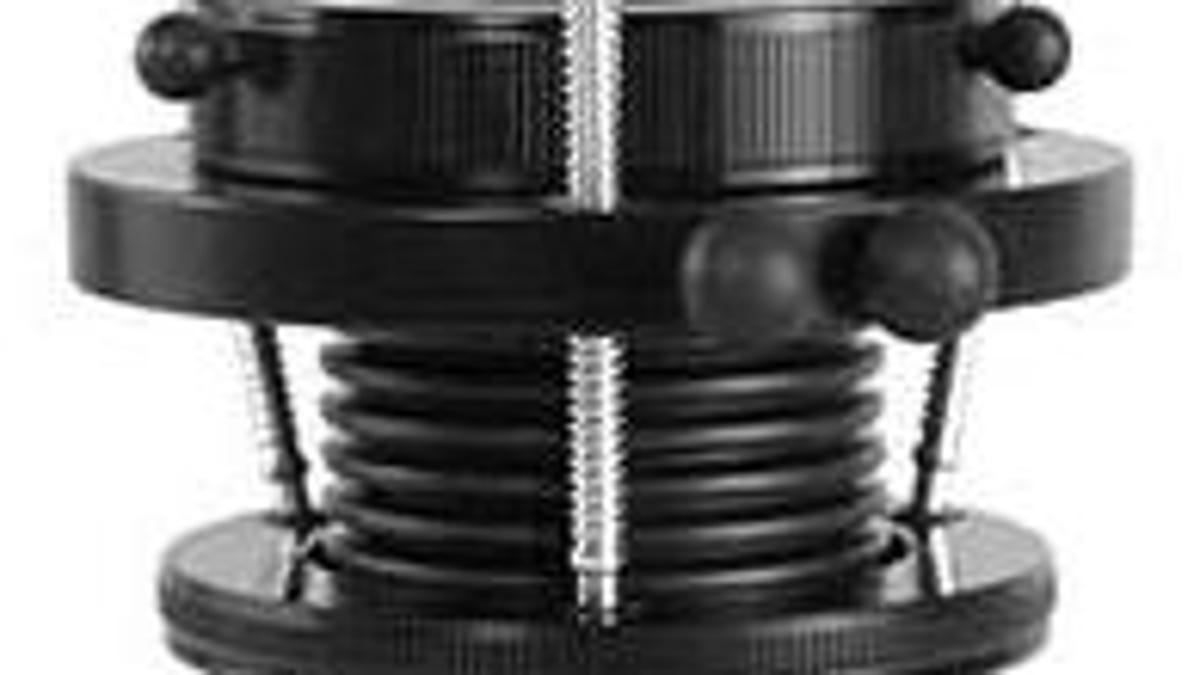Lensbabies: Intuitive photography in an electronic world
These funky selective-focus lenses require coordination to use but can produce effective, attention-getting images.

I've tried Lensbabies' 3G selective-focus lens, and I like it.
This lens, which looks more like a miniature Lunar Excursion Module than a traditional SLR lens, restores some physicality to a world of photography that's ever more electronic and automated. And the images it produces can be compelling.
The trend in photography in recent decades has been toward ever more automation. We have automatic exposure, focus, shutter speeds, white balance. As computers get smaller, the list of automated camera operations gets longer: newer Panasonic models can tell the difference between a landscape and portrait, and Sony's DSC-T200 can be set not to shoot until it detects a smile. In general, I'm supportive: autofocus fares better than I do in general, and I loathe setting white balance. And a lot of folks in the point-and-shoot area benefit from hand-holding.
But Lensbabies, a small company in Portland, Ore., is going against this grain, and it's refreshing.
Though images the Lensbaby 3G produced can be gimmicky, they also can be very effective. These selective focus lenses are so named because a relatively small patch of the image is in focus, and the rest recedes quickly into a blur. The effect is to concentrate the viewer's attention sharply on an in-focus point and, sometimes, to impart a sense of motion toward it.
Here's how the Lensbaby 3G works. There are two lens elements, one fixed close to the camera body and the other at the other end of a flexible plastic tube. You use your fingers to flex, compress or extend the tube, reaching around the camera body (and in my case, wishing I had longer, more dexterous dactyls). The position of the farther lens determines what exactly is in focus, and you can steer it so it's an off-center.
It's fun but tough to focus. It's very intuitive, and I got much better at it with practice as reflex gradually took over from conscious thought. Even so, I was grateful to be shooting digital, because the fraction of dud shots was much higher than usual. And I wished often for a larger, brighter viewfinder so I could see what was in focus better.
Shooting moving subjects was especially unreliable. If you've got time to set up shots in advance with a tripod, though, the lens can be fixed temporarily in a particular position then fine-tuned.
It's not just the focusing that's manual. The lenses have different apertures, but setting it involves pulling out a washer-shaped disc with a magnetic tool and replacing it with a different disc with a different-size hole. I stuck mostly with the f/4 disc, which lets a fair amount of light through. Using smaller apertures--the lens comes with a good selection--produces a deeper depth of field to ease focusing, but of course it also slows shutter speeds and reduces the selective-focus effect.
Exposure is set using the camera's through-the-lens metering, with no communication with the lens. I often found on a Canon Rebel XT that it was best to drop exposure down by about a stop.
The Lensbaby 3G has a 50mm focal length. It costs $270 for Sony, Leica, Canon, Nikon, Pentax/Samsung and Olympus/Panasonic SLR mounts and $390 for medium-format Pentax 67 and Mamiya 645 mounts. The company also sells a $114 kit with 0.6x wide-angle and 1.6x telephoto kits and a macro adapter for close-up shots.

